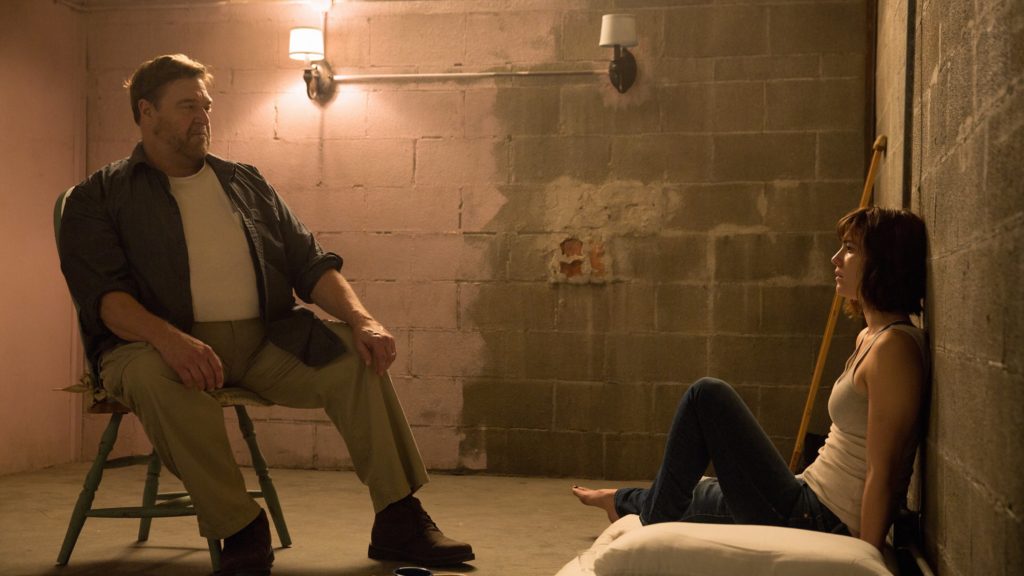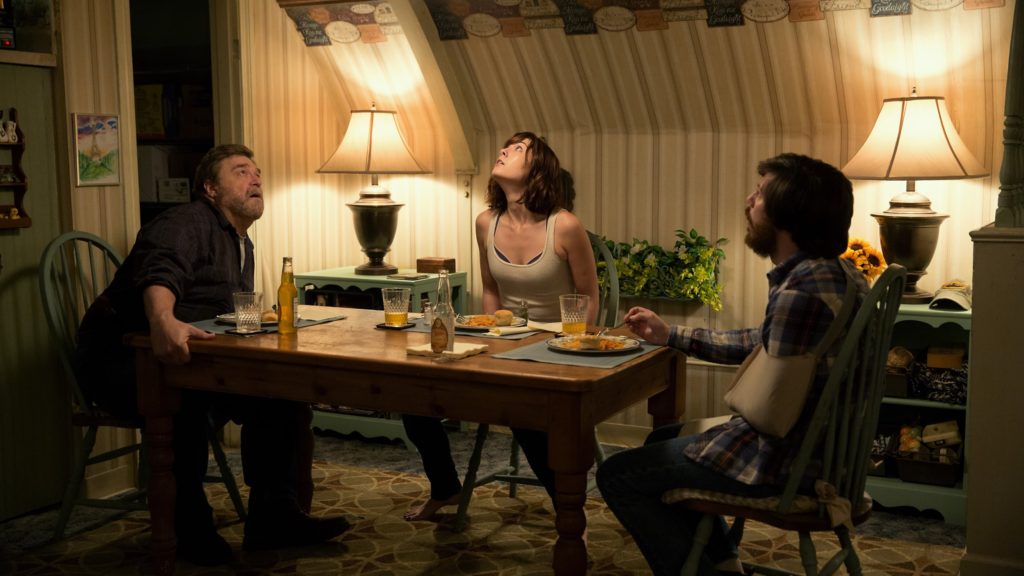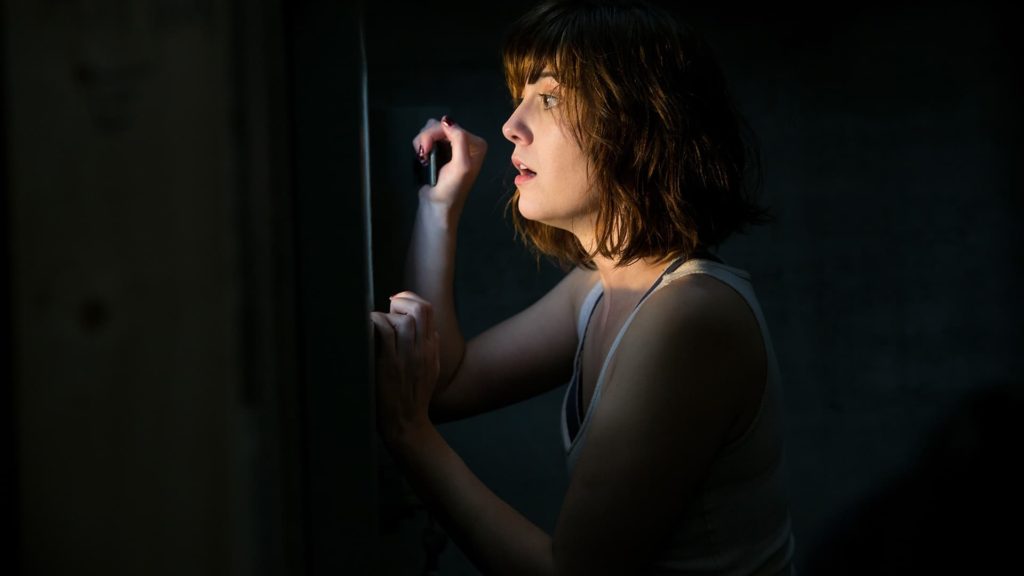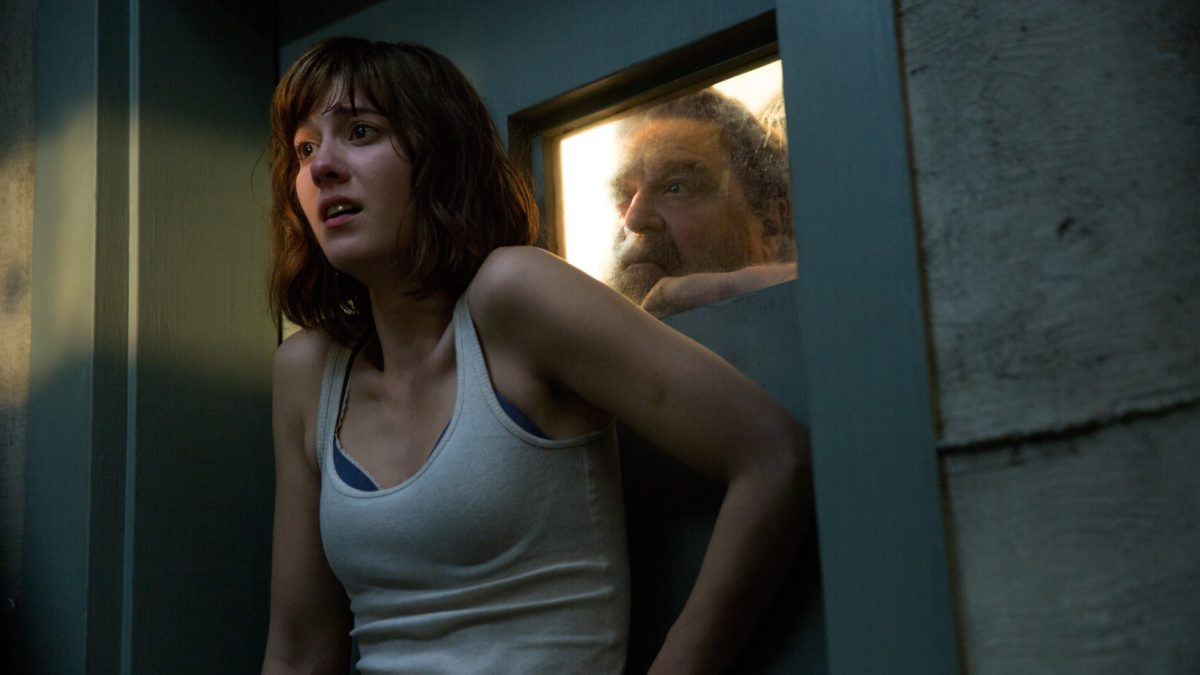More like John bad man
Saying that 10 Cloverfield Lane is a different kind of movie from Cloverfield is an understatement. It is about as opposite as a movie can be while still being suspense films set against an apocalyptic alien invasion. I realize that last item a bit of a spoiler for 10 Cloverfield Lane; we’ll unspool that in a bit.
The contrasts between this film and its forebear run deep:
- Cloverfield is a found footage kaiju film; 10 Cloverfield Lane is an abduction thriller.
- Cloverfield takes place across a dozen different urban settings; 10 Cloverfield Lane takes place in three rooms for 90% of its runtime.
- Cloverfield has a clear stylistic mission, evoking 9/11; 10 Cloverfield Lane uses an absence of stylized horror elements, just a few boxy rooms, as its key aesthetic (for all but the last 20 minutes).
- Cloverfield uses characters merely as rails to get to the spectacle; 10 Cloverfield Lane is built entirely around its characters and their tense interactions.
- Cloverfield features one of my actress crushes (Lizzy Caplan); 10 Cloverfield Lane features one of my actress crushes (Mary Elizabeth Winstead).
Well, I guess they have at least one thing in common.

The movie opens with Michelle (Winstead) leaving her fiancé for some unspecified reason. As she’s driving down a country road, she has an abrupt car crash, knocking her unconscious. When she wakes up, she finds herself in what appears to be an underground prison cell, an IV hooked into her arm.
She tries to escape, but is confronted by Howard (John Goodman), who claims to have seen her crash and saved her life. Michelle tries to talk Howard into releasing her, but Howard insists that the world is undergoing a biological disaster, and she will die if she leaves his bunker. He’s protecting her, he insists. Shortly afterwards, a third person joins the bunker, Emmett (John Gallagher, Jr.) who largely corroborates Howard’s story.
Thus emerges the critical flaw in 10 Cloverfield Lane, at least for its first half. It’s the name. 10 Cloverfield Lane. Unless the movie is going doing a massive swerve on us, which I personally would have liked but would probably have pissed off most of the audience, we know that there is indeed some sort of alien apocalypse. Thus we’re in a state not of suspense but of dramatic irony, but the movie doesn’t act that way. It’s very odd.
(To dive a bit deeper into spoilers, here, the set-up also simply begs for a second twist to subvert audience expectation at least in some way. And we get that twist: Though there really is an apocalypse, Howard actually is a kidnapper.)
The movie lives by its acting. Winstead is excellent as the heroine, bringing out the best of each of Michelle’s roles: she has a strong rapport with Goodman and Gallagher, she nails the action scenes, and she thrives in the moments where she’s isolated, too. I suggested in my review of Live Free or Die Hard that she could carry her own action franchise some day, and I still definitely believe it.

Goodman is a highlight as well, possibly even better than Winstead. His version of an unhinged, paranoid captor right on the blurry edge of benevolent is terrific. I was most impressed when he ratcheted the bruising intimidation at the needed moments. He is legitimately scary, which he balances with some longing monologues about the people he cares for, like his daughter. It ultimately paints the picture of a dark but complicated human.
The script is written by Damien Chazelle. He was initially tapped to direct as well, but decided to make La La Land instead. The correct career decision, no doubt. Chazelle emerged from college as a “script guy,” and we see it in some of his unconventional work that was produced in the early- and mid-2010s. Grand Piano is a gripping high concept thriller; this and Last Exorcism Part II are reinventions of existing properties with new lenses. (I would say new, “clever” lenses, but not much in Last Exorcism Part II counts as clever.)
For 10 Cloverfield Lane, Chazelle didn’t write the initial spec of this film; that was Josh Campbell and Matt Stuecken. Chazelle reshaped it into its current form. Knowing what we do about Chazelle’s directorial talent, it’s hard not to wonder what this might have looked like with his vision.
Despite Chazelle’s touch — and he is a good writer — I think the script works much better on paper than on celluloid. The narrative is schematically compelling, whether or not you mark the spoiler of Cloverfield in the title against it, but not especially emotionally effective. I was never invested in the characters, including Michelle, except as a vessel for the next twist in the abduction saga. Unlike Cloverfield, which can ride on its production values, 10 Cloverfield Lane depends upon being a strong character piece, which isn’t fully there.

One wrinkle: This movie came out three years after the Ariel Castro kidnapping rescues made headlines, which gives some extra charge to the interactions between Howard and Michelle. Sexual predation is kept (mostly) as subtext, but there’s still some ooky nastiness rolled up with the film’s suspense.
Then there’s the matter of the climax, which turns 10 Cloverfield Lane an entirely new movie for 15 minutes. It definitely pays off on the Cloverfield name, but shifting from a human-centric thriller to a monster-centric, CGI-driven one so close to the conclusion is a bit baffling. It feels grafted on from a different film and had me scratching my head as the credits rolled.
Ultimately, 10 Cloverfield Lane film provides just enough thrilling suspense and well-acted characters to earn a recommendation. I just wished it was a little smarter and more heartfelt.
- Review Series: Damien Chazelle
Is It Good?
Good (5/8)
Dan is the founder and head critic of The Goods. Follow Dan on Letterboxd. Join the Discord for updates and discussion.

